Dennis Parks is Curator Emeritus of Seattle’s Museum of Flight.
In the May 13, 1920, issue of the English magazine Flight, a survey of a new type of aircraft they called the “sporting aeroplane” was published. The article provided a list of these aircraft of 50 horsepower or under, along with drawings of each.
Though most of the airplanes were from England or France, some six American designs were covered: ACE, Bellanca CE, Dayton-Wright Messenger, Hild-Marshonet, Loening Kitten, and Martin Kitten. Other new American sport planes not listed in the Flight article include the Cato monoplane, Lockheed S-1, Longren biplane, Pioneer biplane and Waco Cootie.
The Flight article remarked that these sporting aeroplanes were receiving quite a large share of the attention of American designers judging by the large number that were making their appearance.
They also were getting attention from the U.S. press, which first used the term “sport plane” in 1919.
These new machines were, for the most part, single-seaters with low horsepower engines designed to be sold at a reasonable price. The lower power engines would be cheaper to purchase and have lower fuel consumption than standard engines of the time (such as the 90-hp Curtiss OX-5). The planes also showed some design innovations, such as plywood monocoque fuselages, self-adjusting struts, folding wings and retractable landing gear.
Low empty weight was important as the planes were designed to use engines in the 35- to 60-hp range. For example, the ACE had an empty weight of 375 pounds, compared to the almost 1,400 pounds of the Curtiss Jenny. Though there were French Anzani engines in this range, they were expensive, so most of these planes had original engines designed for them.
Though these planes would pioneer a new class of aircraft, they could not compete in a market glutted with war surplus airplanes. Most of the designs failed to get into production and appeared only in prototype form or were produced in very low numbers.
American sport planes made their first public appearance at an air meet that took place Sunday, Oct. 16, 1921, at Curtiss Field in Mineola, Long Island, New York. This was an event sponsored by the Aero Club of America through the cooperation of the Curtiss Aeroplane and Motor Corp., which loaned the field for the event.
Alongside a French Farman sport plane were American designs from Sperry, Mummert and a Horace Keen Ace. The Mummert Cootie, with a 15-foot wingspan, was the smallest plane to fly. The pilot, Bert Acosta, was reported to have flown the Cootie in his stocking feet because, as he explained, he “did not care to overweight it.”
There would not be much sport plane development until the light plane competitions held as part of the national air races in the late 1920s. What followed was a golden age of sport planes featuring such craft as the Corben Ace, Heath Parasol and Pietenpol Air Camper.
But before the golden age, the first sport planes on the scene included:
ACE
The ACE biplane was designed by Alexander Klemin, a professor at New York University. Eight examples were built by the Aircraft Engineering Corp. of Long Island, New York. It was powered by a 40-hp ACE engine. Specs: Span: 28 ft, 4 in; length: 18 ft; load: 225 lbs. It sold for $2,500.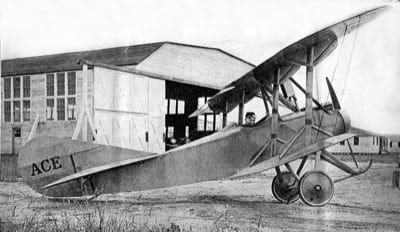
Bellanca CE
The CE biplane, designed by Guiseppi Bellanca in 1919, was powered by a 35-hp Anzani engine. Two were built, including one by Clarence Chamberlin, who would fly the Atlantic after Lindberg in a later model Bellanca airplane. Specs: Span: 28 ft; length: 18 ft; empty weight: 470 lbs; load: 250 lbs; speed: 102 mph.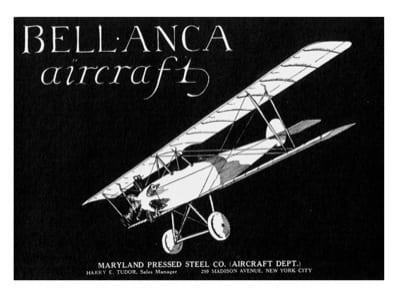
Hild-Marshonet
The Hild-Marshonet biplane was designed and built by Frederick Hild and Edward Marshonet of Hempstead, New York, in 1919. It was powered by a 20 hp-Spainhour V-twin engine. It had an unusual configuration, with a pod-type fuselage with a single-boom tail and swept back wings. Specs: Span: 24 ft; length: 19 ft; empty weight: 450 lbs; loaded weight: 700 lbs; speed: 65 mph. Price $2,000.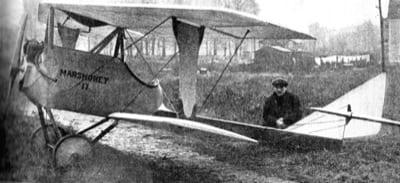
Mummert
The Mummert biplane was designed and built in 1921 by Harvey Mummert, a Curtiss engineer from Long Island, New York. Powered by a 28-hp Lawrence engine, it featured a laminate-plywood monocoque fuselage, such as those used on the Curtiss Oriole. Only one was built. Specs: Span: 18 ft; length: 12 ft; loaded weight: 591 lbs; speed: 90 mph.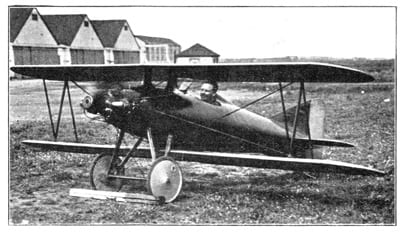
Dayton-Wright Messenger
The Dayton-Wright Messenger biplane was designed by Oliver Thomas in 1918. It was powered by a 37-hp DePalma V-4 engine. Dayton-Wright hoped to get an Army contract. Failing that, it was planned to sell on the civil market, but only one was built. Specs: Span: 19 ft, 3 in; Length: 17 ft, 6 in; empty weight: 476 lbs; loaded weight: 636 lbs; speed 85 mph.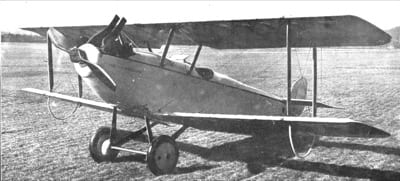
Dennis can be reached at [email protected]
